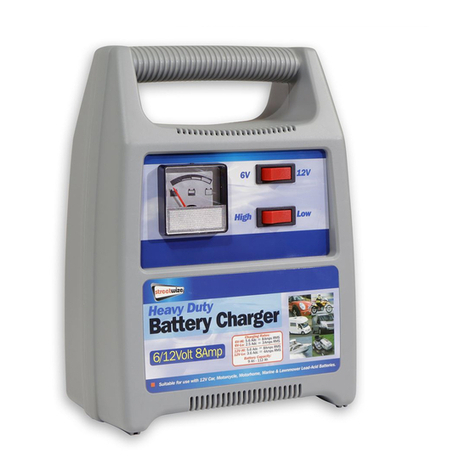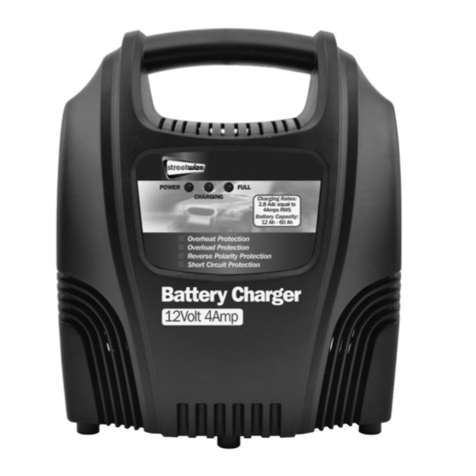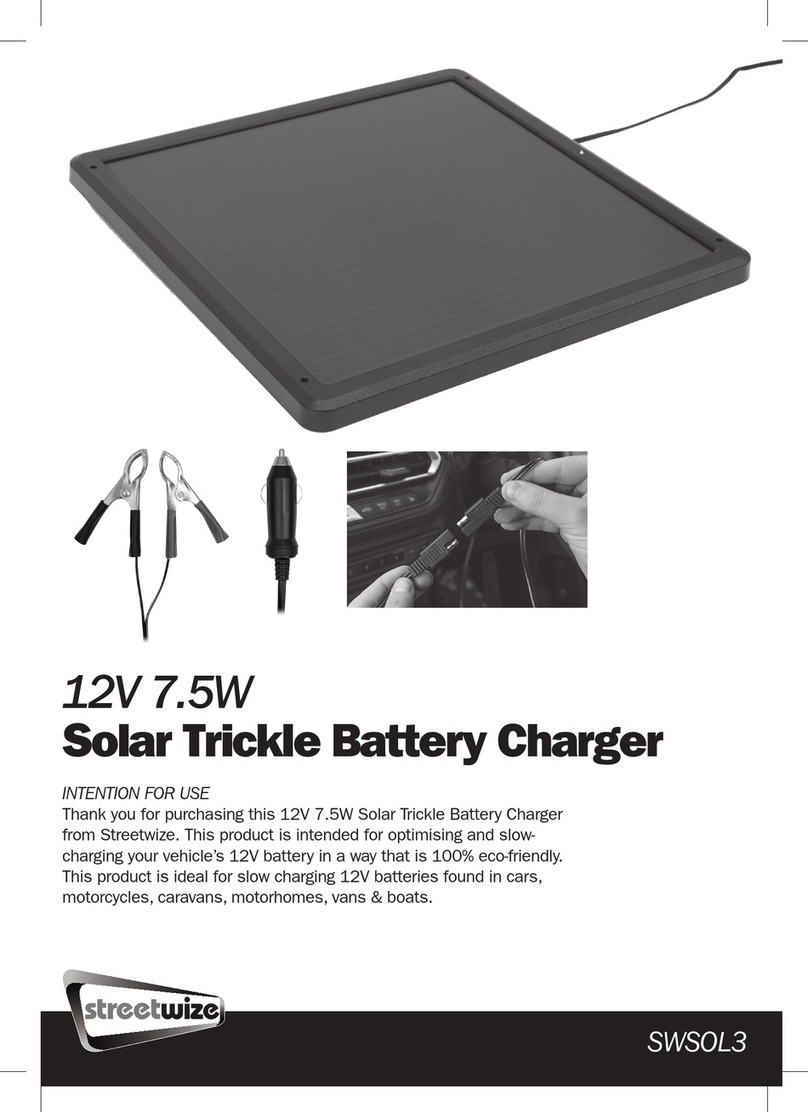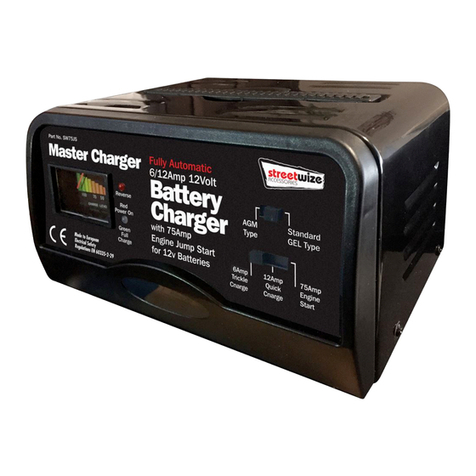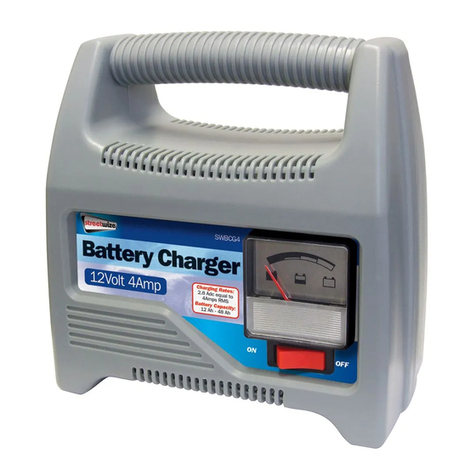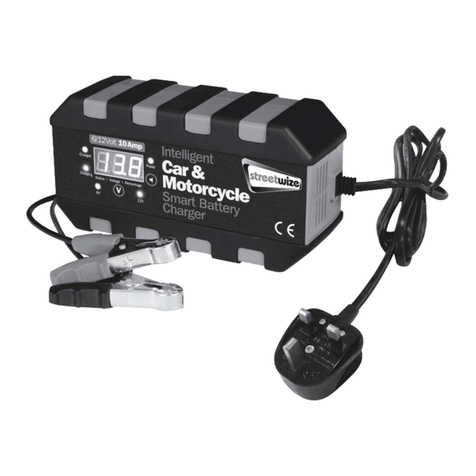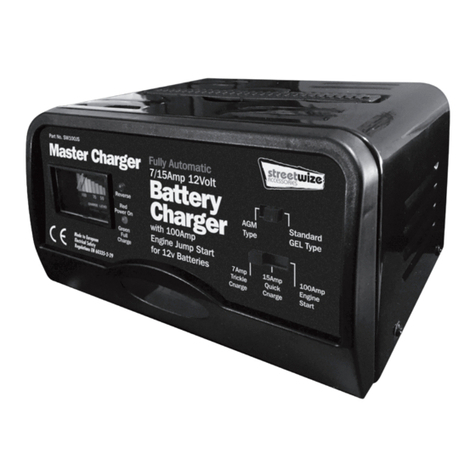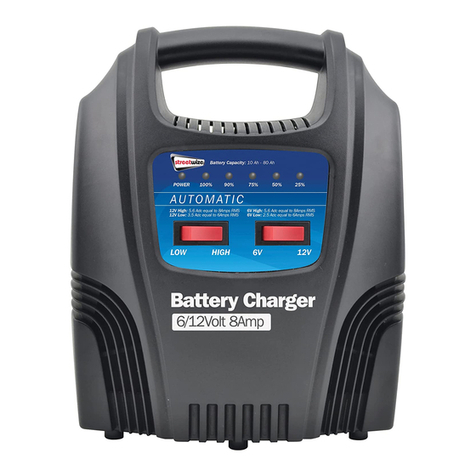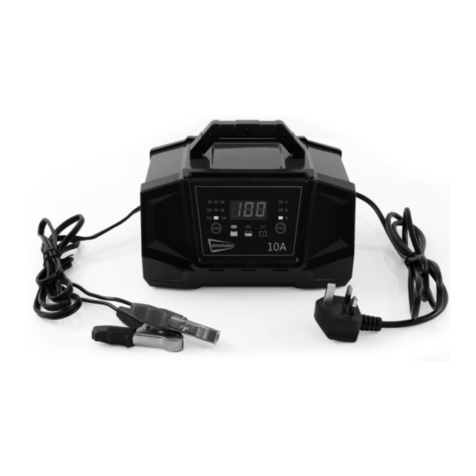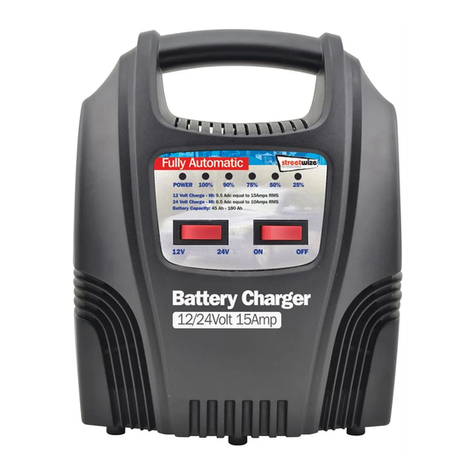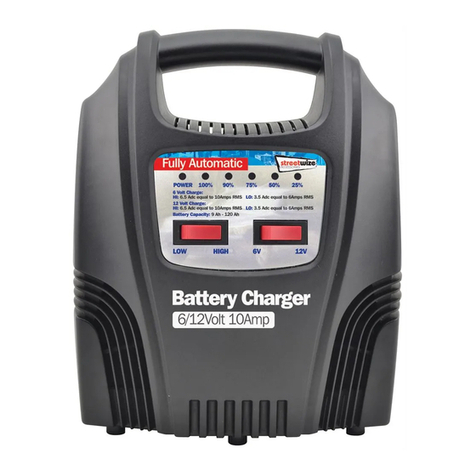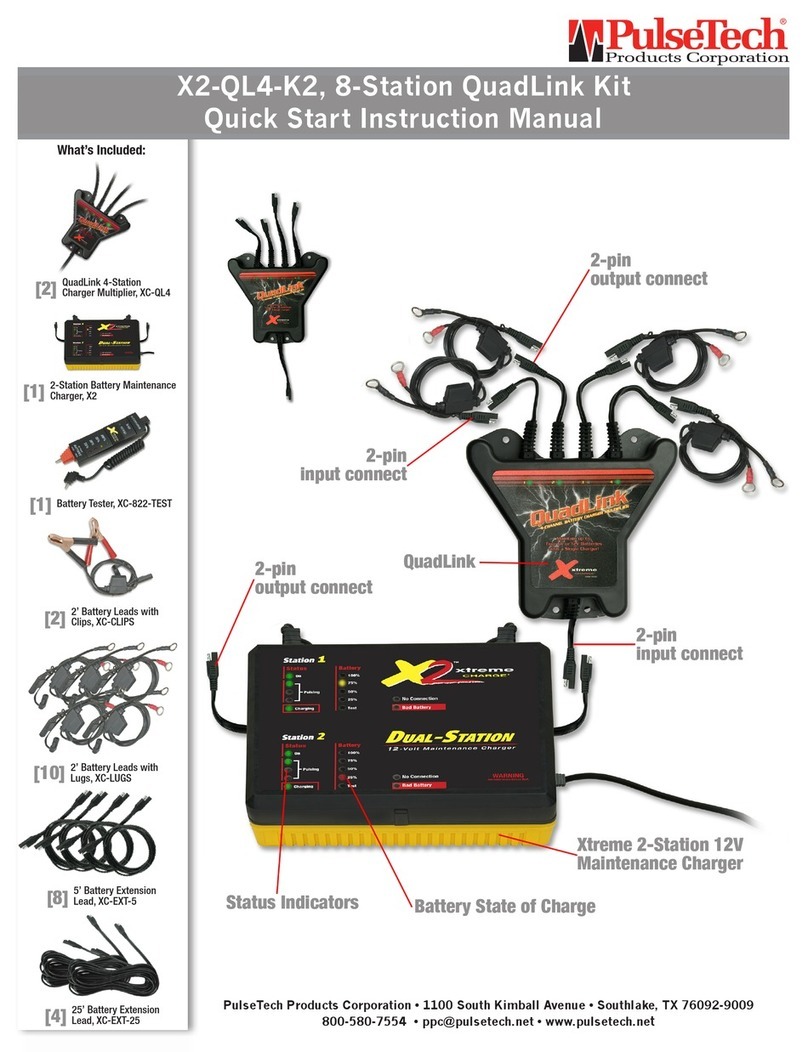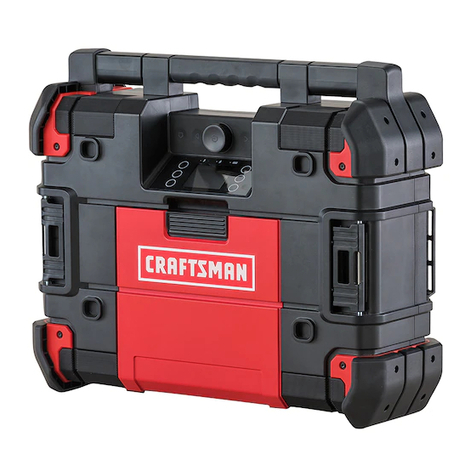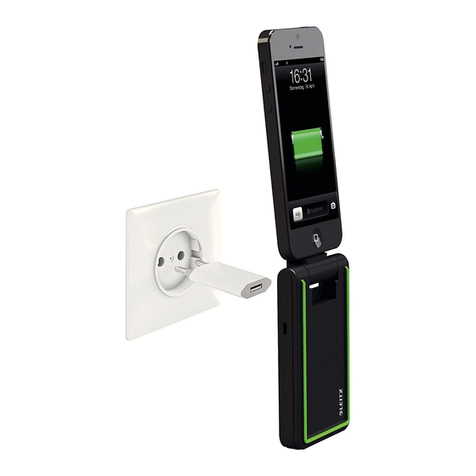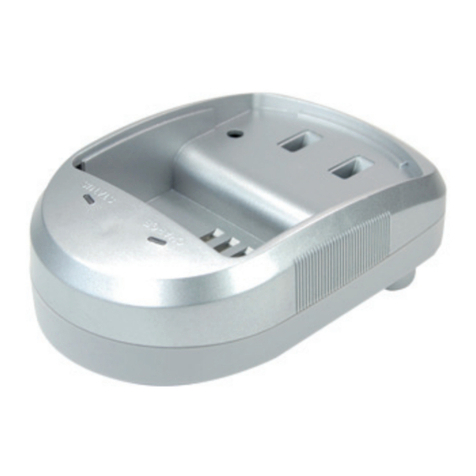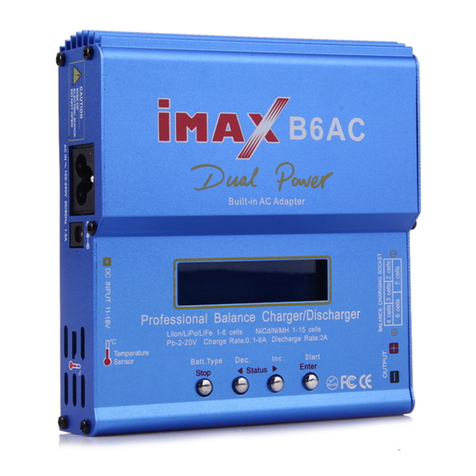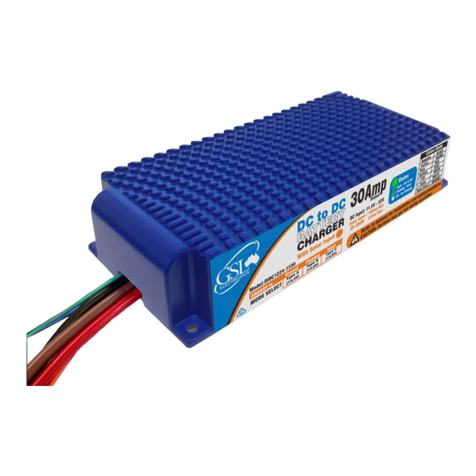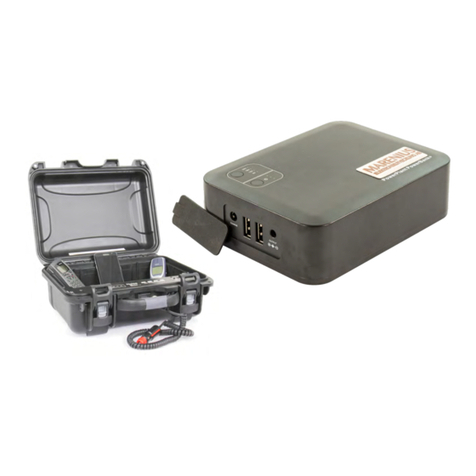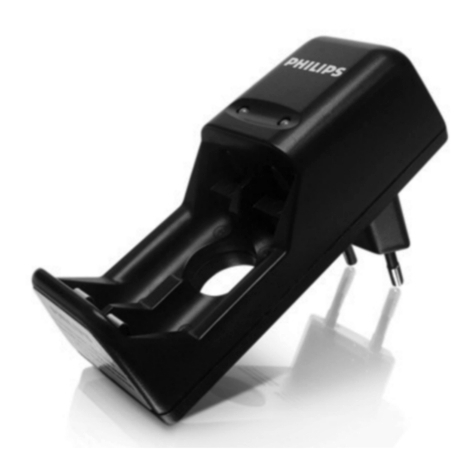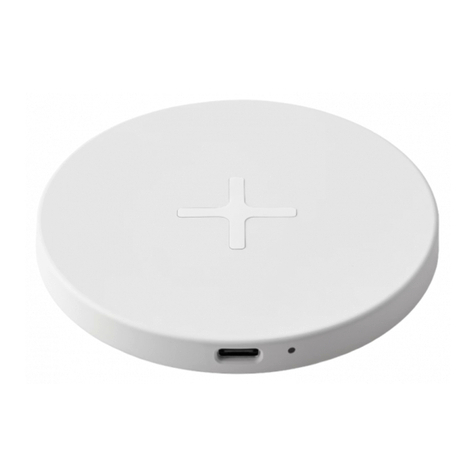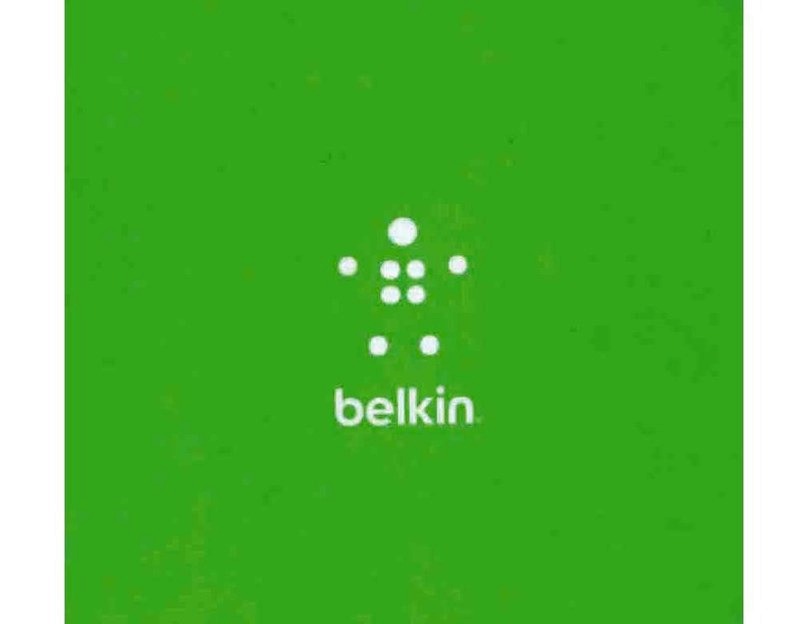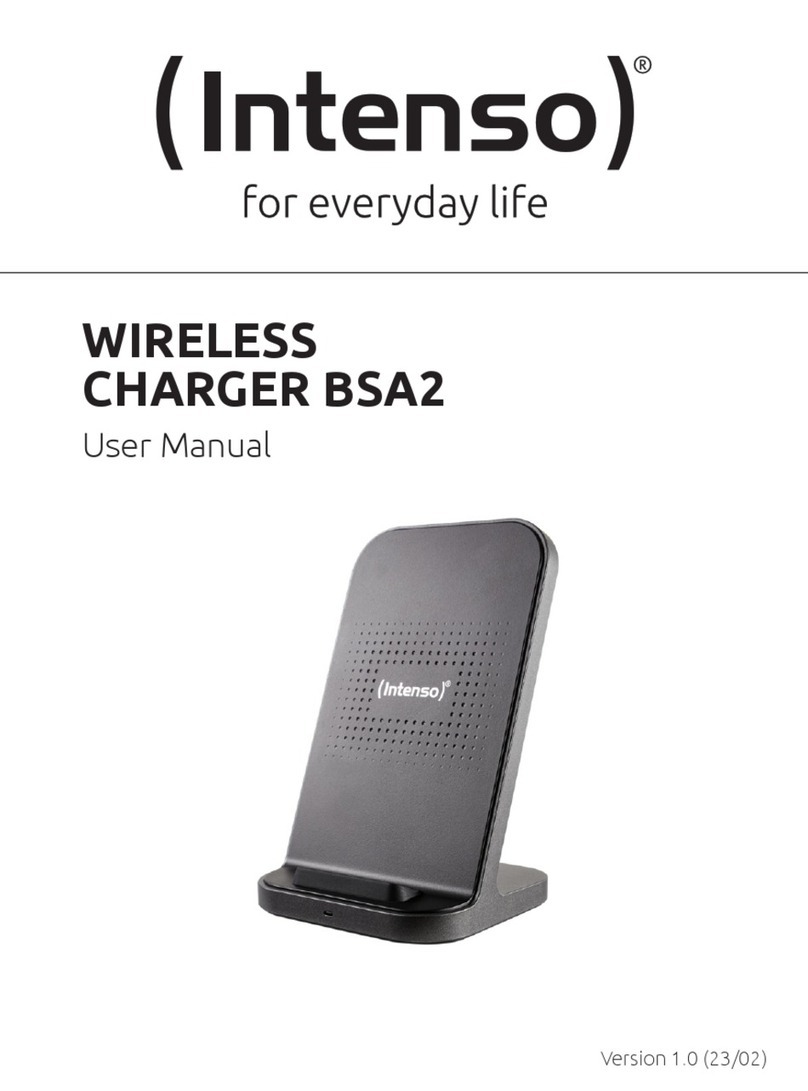Battery Maintenance:
Please check your battery regularly throughout the year and especially in
the winter.
Faulty cells can cause problems with your battery, check the cells with a
hydrometer, if any cell is reading lower than the others it can indicate a faulty
cell. if this is the case have your battery checked, as you may need a new
battery. It is possible that a battery may appear flat when it could simply be a
loose connection of the battery terminals. Check the terminals and tighten if
necessary then check the battery again.
To enable safe operation of this battery charger, make sure you follow basic
safety principles to reduce a risk of personal injury, electric shock and fire.
Always ensure the battery charger is kept in a dry place to avoid damage, and
store out of the reach of children. Do not use the charger in damp or wet areas
as moisture will damage the transformer.
Always check the battery chargers plug, cables and crocodile clips before use.
Do not open the charger, there are no serviceable parts.
When charging, the liquid in the battery may bubble causing a release of gas,
this is flammable so always operate the charger in a well ventilated place and
away from naked flames and sparks.
These chargers are only suitable for 12 Volt Lead-Acid batteries and
should not be used to recharge NICAD or any other type of battery.
DANGER: Avoid getting battery acid (electrolyte) on your skin or clothing,
as it may cause burns. If this occurs rinse immediately with cold water
and if necessary seek medical advice.
The charger contains a temperature-sensitive switch that automatically
cuts off when the charger is overloaded or becomes excessively hot. The
charger will switch back on after the unit has cooled.
Safety Instructions:
FOR INDOOR USE ONLY.
Operating Instructions:
Please read the information on the front of these instructions for the maximum
battery capacity recommended for use with this charger. Using with batteries
smaller than this capacity may lead to damage to your battery.
1. Disconnect the Battery from the vehicle to avoid damage to the alternator. It
is advisable were possible to remove the battery from the vehicle as spillage
from the battery can cause damage.
2. If you have a maintenance free/sealed battery it is not necessary to carry
out the following checks. Carefully remove all the caps from each battery
cell, and ensure the liquid as at the recommended level. Top up with
distilled or de-ionised water if required (ALWAYS wear protective gloves as
this liquid is corrosive). Tap water should NOT be used under any
circumstances, allow time for any gases to escape before replacing the
caps. Warning: if your battery is the AUTOFIL type, manufactured by
Dagenite or Exide, the glass balls and the long filler cap MUST be left in
place during charging.
3. DO NOT plug the charger in until you have connected the crocodile clips
correctly.
4. Connect the crocodile clips in the following order.
a) Connect the positive (+ Red) charging lead to the positive
(+ Red) terminal.
b) Connect the negative (- Black) charging lead to the negative
(- Black) terminal.
It is important that the crocodile clips are making good contact with the
battery terminals.
IMPORTANT OPERATING INFO:
5. Plug the Charger in using the fused AC mains plug, turn on the battery
charger, the RED LED should illuminate. When the charging commences,
ALL LED’s will illuminate, as the charging progresses the L1-LED will go out
first, the timing of this will vary with the condition of the battery. The second
phase will then commence, when this is complete the L2-LED will go out,
this indicates that the charging is complete.
The battery can remain connected at this point, sensors in the
battery charger AUTOMATICALLY switch the charger to a TRICKLE
charge preventing over-charging. This will maintain the battery in a
fully charged condition.

